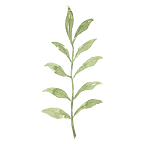Painting & Denial
Have you ever given someone general life advice? For me, I can almost extract myself in the third person and watch my tongue slapping the roof of my mouth with phrases saturated in emotional intelligence. Just to go home, witness all my advice run for the hills the minute I stub my toe, and find myself arguing internally over whether I should chop my foot off to save my toe.
Why? is it because I didn’t really believe my advice? No.
It was because my “advice” was a mixture of ego and intellect, and with each year of life, I realize maturity is less about knowing what the right response is, but grabbing my limbs by the thoughts and patiently spelling out my core values until they transfer from intellect into muscle memory. Did you know most of that requires eating your ego for breakfast with a cup of raw eggs and tears? Yeah, I found that out when hospice patients would ask me things like:
“Hey, where do people go anyway?”
“Is this really it?”
“What about my dreams?”
“What’s the point?”
It really triggered some kind of imposter syndrome because I had no remedy and wasn’t I supposed to be “a helper”? More than that, I realized I couldn’t genuinely sit with their discomfort because I was busy pressing up the crumbling forts of a heavily employed friend I had….
Denial.
I’ve employed denial as my comforting cocoon knowing full well its purpose is as fleeting as fried food, but it tastes good and once in a while, it helps me get by and do laundry. Yet, like fried food, it runs empty, doesn’t it? A few days ago I remembered this while I met denial again over some lunch I burned, toasting my vision of making an easy lunch. I have no idea if this is productive, but I realized meeting denial felt a lot like the stages of stubbing my toe.
Step 1: Blame- “Where did this bookcase come from?”
Step 2: Loss of Numbness — “Why is the pain shooting into my head, didn’t I hit my toe??”
Step 3: Catastrophizing — “Will I ever remember what it feels like to walk without leaning on my heel?” and “So I’m a lunch burner now?” (oh yeah, I went there!)
For some hospice patients truly trying to surpass denial, I noticed their work was cyclical, frustrating, and sometimes it included naps from their minds. For those who stayed the course, each round created a deep connection that heightened their acceptance potential despite their diagnosis. The process was less about eradicating denial and instead, seeing each point of denial as a different color to create something meaningful with.
So what’s the process already? Sorry, but its another set of metaphors:
You’ve heard of keeping with the Joneses, right? Facing and digesting denial was realizing I was keeping up with “My-Ownses” — false images of societal archetypes I subconsciously upheld. This is distinct from having productive expectations, dreams, and goals for yourself. The way to identify “My- Ownses” is that it will feel like inauthentic schemas built on a foundation of blame, numbness, and anxiety. I learned that if my archetypes were wilting it meant it was time to repurpose them because they stick out like weeds in my garden and if I didn’t maintain it — I couldn’t see the nice flower lined house behind the weeds.
Digesting my denial & painting with it:
Find wilted flowers
I went into my garden of dreams and expectations, and if I saw some wilted flowers I knew those were the ones I was conscious enough to tackle. Some flowers were so pressured by reality, they were basically powder.
Cry / Accept
It was a loss to see what I pictured as a vibrant flower, wasn’t actually. So I mixed the powder with some water which helped me respect the reality of loss, and repurpose powder into paint. If you notice, accepting the denial is not at all about writing off accountability, acceptance is a transformative action.
Create
Each time I found something I was in denial about, it would be a different color and I knew the exercise was integrating when I felt less limitation and more possibility. Now, don’t be like me and beat yourself up over finding different shades of denial, fast track to realizing you can’t paint nice things without colors.
If I remember to do this proactively, and I do on occasion, I find the “advice” starts to live in my stubbed toe and the pain doesn’t need to extend to my head to wake me up, oh and it’s no longer the bookcase’s fault.
This mental maintenance results in more authentic, spontaneous self-awareness in areas I struggle with. Raw acceptance integrates emotions which can ease those suffering things like the patients I met or even those of us who tend to make much ado about lunch.
Note: This is how I (a regular person) deals with denial — please do not take this as professional advice.
Interesting links on Illness Denial, Acceptance, and the “Self”
